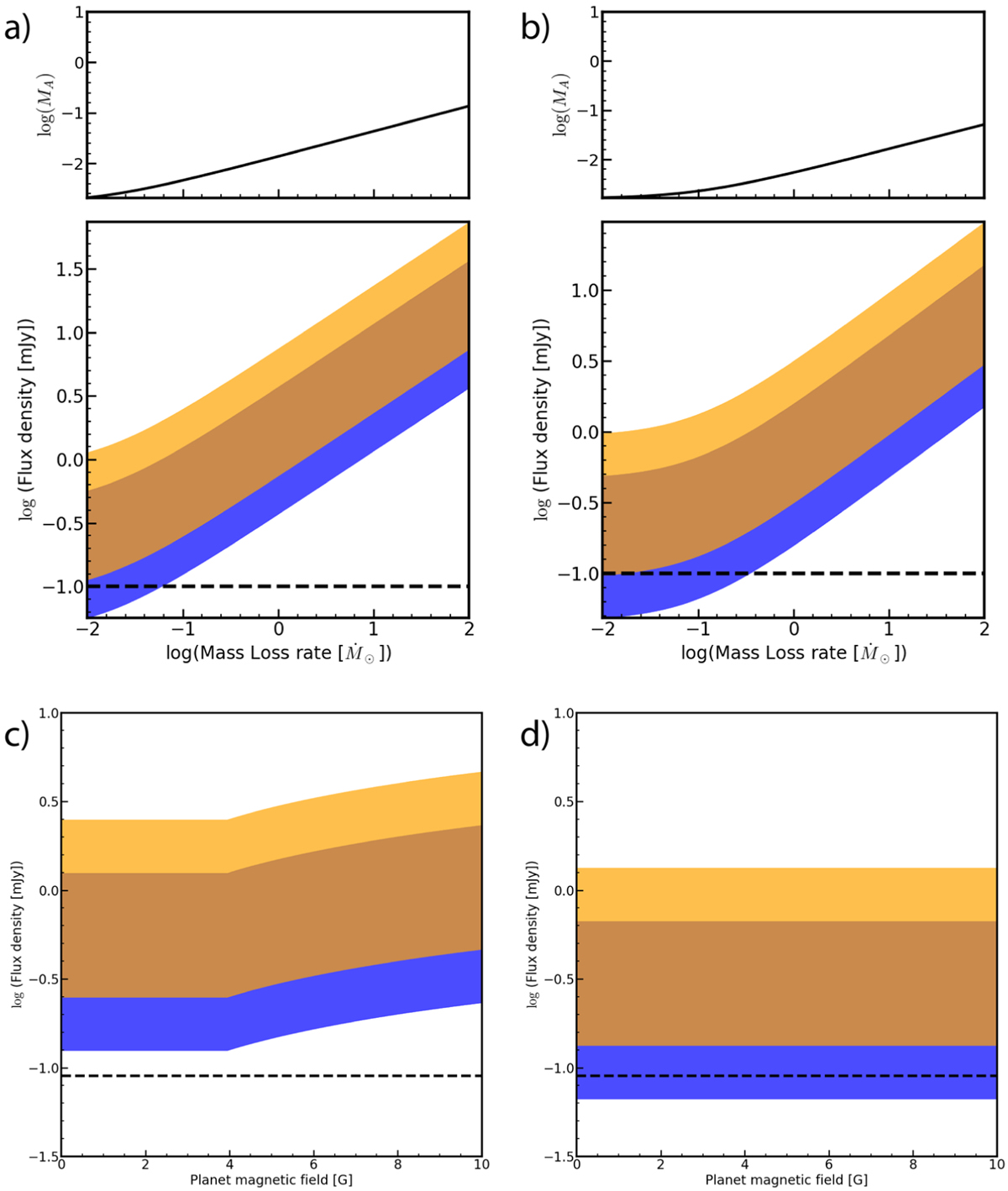Fig. 15

Download original image
Flux density arising from starplanet interaction as a function of the stellar mass-loss rate (panels a and b) and the magnetic field of the planet (panels c and d). (a) Expected flux density for a closed dipolar geometry. (b) Expected flux density for an open Parker spiral geometry. (c) Expected flux density for a closed dipolar geometry. (d) Expected flux density for an open Parker spiral geometry. For (c) and (d) we assume Ṁ = 0.1 Ṁ⊙. Note that the resulting radio emission is unaffected by the magnetic field of the planet, unless the latter is very large (~4 G for closed dipole or even > 10 G for a Parker spiral). The emission expected from Saur/Turnpenney’s model is shown in orange, and the emission expected from Zarka/Lanza’s model is shown in blue. The overlap between both models is shown in brown. The dashed black line represents the assumed detection threshold of 100 μJy.
Current usage metrics show cumulative count of Article Views (full-text article views including HTML views, PDF and ePub downloads, according to the available data) and Abstracts Views on Vision4Press platform.
Data correspond to usage on the plateform after 2015. The current usage metrics is available 48-96 hours after online publication and is updated daily on week days.
Initial download of the metrics may take a while.


